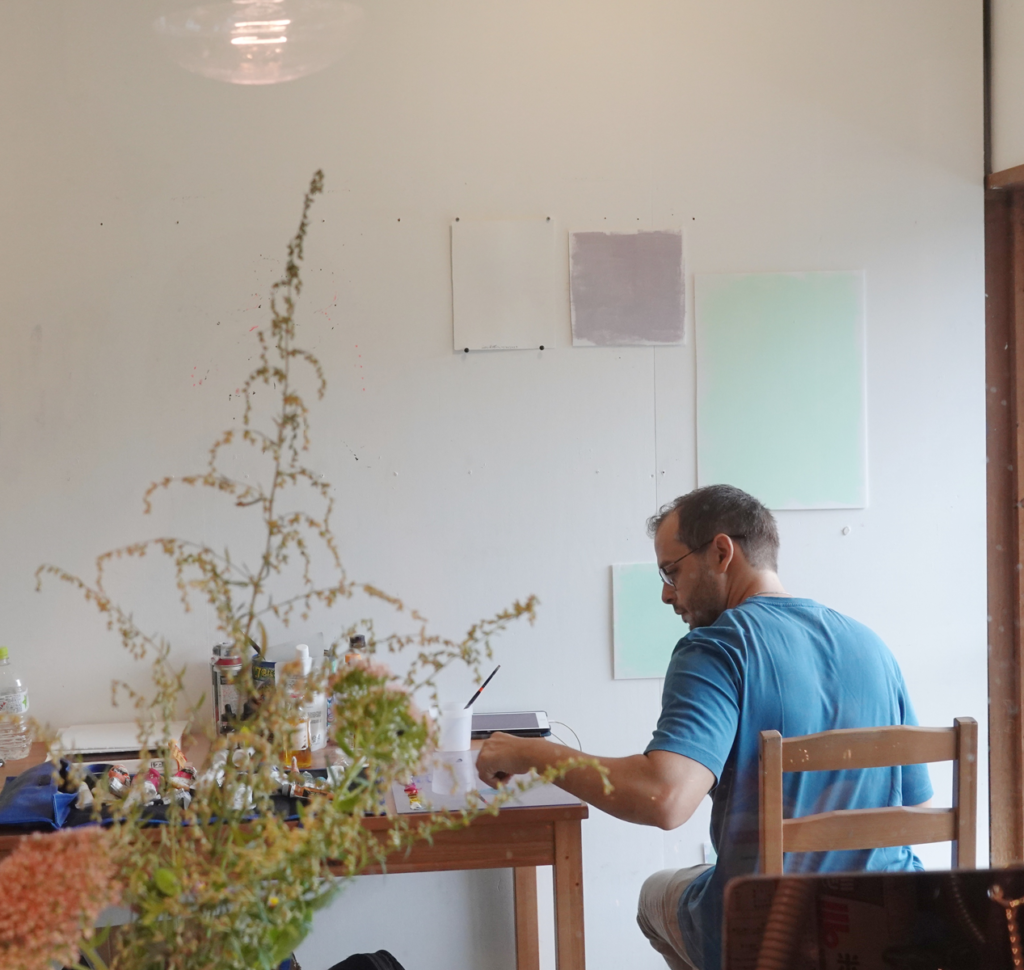Teaching philosophy
One important realization about painting is that it is not just an art form, rather, it is a visual language with its own set of rules.

This realization is often overlooked, leaving room for painting to be perceived as intimidating or only for ” the talented”.
When one learns a new language, the person is expected to initially learn it’s most basic component, the alphabet. Whilst with painting, it is often expected that while learning them, they are also expected to be able to write poetry. Such high expectations of language mastery may lead many individuals to deem painting as something they are incapable of doing. Although many people might be interested in painting, for that particular experience and issue, they are easily discouraged.
Painting is, in fact, an intrinsic form of nonverbal self-expression that we are all born with. Most of us are able to access it before we are taught how to speak or write. The existing stereotype that only the talented few can paint, has shifted our attention away from the possibilities that this paradigm has neglected , leaving most art enthusiasts out of the equation.
When one learns a new language, the person is expected to initially learn it’s most basic component, the alphabet. Whilst with painting, it is often expected that while learning them, they are also expected to be able to write poetry. Such high expectations of language mastery may lead many individuals to deem painting as something they are incapable of doing. Although many people might be interested in painting, for that particular experience and issue, they are easily discouraged.
Painting is, in fact, an intrinsic form of nonverbal self-expression that we are all born with. Most of us are able to access it before we are taught how to speak or write. The existing stereotype that only the talented few can paint, has shifted our attention away from the possibilities that this paradigm has neglected , leaving most art enthusiasts out of the equation.
My journey as a self-taught painter has led me to believe and witness that there isn’t a singular way of acquiring skills. it is not a one-size-fits-all approach. Because of this, I work hard on personalizing my teaching process; this often includes adjusting my methods and pace of relaying information to meet the learners where they are.
When teaching students, I aim to achieve a balance through which they feel challenged, yet not overwhelmed. In pacing the process, I am able to breakdown complex concepts into simpler forms. Through that , I find that students are more likely to see their gradual progress without falling into a sense of frustration or failure , nor boredom and redundancy.
My teaching approaches are devised from sound and diverse academic methods, coupled with thousands of hours worth of painting and problem solved me that has led me to experience all potential problems that anyone might face in painting, and thus being able to pinpoint the issues that any student might struggle with and what are the possible solutions or weak points to work on. My own relationship with painting allows for a great deal of flexibility, curiosity and creative play. This has helped shape my tailored and analytical teaching style. For some, such individualized teaching methods can be considered limiting ( as it only allows for a few students at a time), but I personally find that it supports a more careful attunement towards each student’s needs and goals.
My teaching philosophy rests on the conviction that with the right pace, tools , and catered attention, everyone can paint, and paint well.
When teaching students, I aim to achieve a balance through which they feel challenged, yet not overwhelmed. In pacing the process, I am able to breakdown complex concepts into simpler forms. Through that , I find that students are more likely to see their gradual progress without falling into a sense of frustration or failure , nor boredom and redundancy.
My teaching approaches are devised from sound and diverse academic methods, coupled with thousands of hours worth of painting and problem solved me that has led me to experience all potential problems that anyone might face in painting, and thus being able to pinpoint the issues that any student might struggle with and what are the possible solutions or weak points to work on. My own relationship with painting allows for a great deal of flexibility, curiosity and creative play. This has helped shape my tailored and analytical teaching style. For some, such individualized teaching methods can be considered limiting ( as it only allows for a few students at a time), but I personally find that it supports a more careful attunement towards each student’s needs and goals.
My teaching philosophy rests on the conviction that with the right pace, tools , and catered attention, everyone can paint, and paint well.
